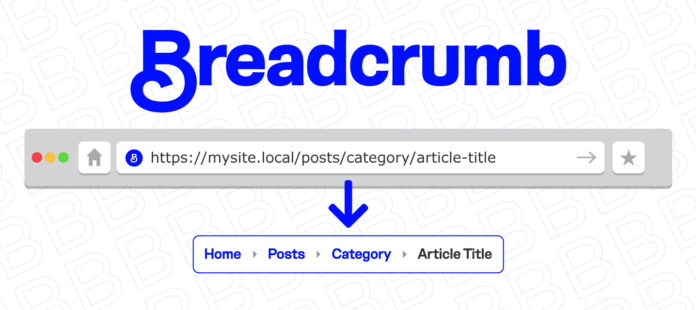Breadcrumbs of your website can help Google better understand the hierarchical structure of your content.
Additionally, it helps users locate themselves on your website.
Breadcrumb navigation appears to be advantageous for both Google and its users.
But does that mean it directly affects how you rank in organic search results?
Let’s look at it.
According to the Claim, Breadcrumb Navigation Is a Ranking Factor
The SEO industry took notice of breadcrumbs when Google initially introduced them to the search results in 2009. Around that time, the search engine modified the way the site hierarchy is shown in its search results.
Google used to show a green URL, or web address, at the bottom of each search result to let people know where they were going.
A hierarchy (sometimes referred to as breadcrumbs) that displayed the precise location of the page on the website took the place of the green URL.
Because their SERP listing stood out from the competition, websites having hierarchical breadcrumbs in their navigation benefited from the move.
“Each breadcrumb is a clickable link to the corresponding page,” Aaron Wall said at the time, “which, in some situations, might improve traffic to the target site.”
In the years that followed, some SEO experts predicted that breadcrumb
Evidence that breadcrumb navigation affects rankings
To comprehend how breadcrumb navigation became a ranking component, it’s critical to comprehend how SEO experts addressed the topic.
In the early 2010s, breadcrumbs were considered an internal link structure to optimize rather than merely a utility to facilitate website navigation.
To create a perfect breadcrumb linking technique, make sure you use your keyword strategy with the information architecture of your site content.
Its site’s content should be categorized properly, and your URL structure should incorporate keyword-rich and content-relevant category/folder
One of the three crucial link structures to optimize, together with the global navigation template and “alternative link structures,” was identified by Catfish Comstock in 2011.
The notion of breadcrumbs being an SEO ranking factor was mentioned by Matt Green of Ethical SEO Consulting in a blog post from 2012 titled “Breadcrumb Navigation Links as an On-Page Optimization Factor.”
The anchor text used in links is still an important ranking element. Despite recent Google algorithm adjustments that supposedly lessened their significance. When a website’s breadcrumb navigation is enabled, anchor text links to the home page are generated on each page.
Ladies and gentlemen, this is how you can leverage breadcrumb links to your advantage when determining keyword rankings.
Then, Brian Dean of Backlinko added it to his list of Google’s 200 ranking variables without much explanation or supporting evidence.
There are no ranking criteria for some evidence against breadcrumbs.
Breadcrumbs are still present in Google’s SERPs even if the manner it presents search results has changed over time.
Regarding breadcrumb navigation as a ranking factor, our opinion
While enhancing the site’s structure for search engines, breadcrumbs improve the user experience for website visitors.
Additionally, breadcrumbs naturally result in more internal links, which raises those pages’ PageRank. Although this is more of an indirect advantage, breadcrumbs may raise CTR.
The presence of breadcrumb navigation, however, does not ensure a major ranking improvement on your website pages. For many websites to rank highly, breadcrumbs are not necessary.
Although Google recommends using breadcrumbs, this is more for user experience and usability than for SEO and ranking.





